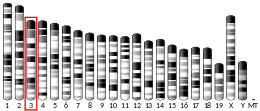| ATP5PB | |||||||||||||||||||||||||||||||||||||||||||||||||||
|---|---|---|---|---|---|---|---|---|---|---|---|---|---|---|---|---|---|---|---|---|---|---|---|---|---|---|---|---|---|---|---|---|---|---|---|---|---|---|---|---|---|---|---|---|---|---|---|---|---|---|---|
| Identifiers | |||||||||||||||||||||||||||||||||||||||||||||||||||
| Aliases | ATP5PB, PIG47, ATP synthase, H+ transporting, mitochondrial Fo complex subunit B1, ATP synthase peripheral stalk-membrane subunit b, ATP5F1 | ||||||||||||||||||||||||||||||||||||||||||||||||||
| External IDs | OMIM: 603270 MGI: 1100495 HomoloGene: 1275 GeneCards: ATP5PB | ||||||||||||||||||||||||||||||||||||||||||||||||||
| |||||||||||||||||||||||||||||||||||||||||||||||||||
| |||||||||||||||||||||||||||||||||||||||||||||||||||
| |||||||||||||||||||||||||||||||||||||||||||||||||||
| |||||||||||||||||||||||||||||||||||||||||||||||||||
| Wikidata | |||||||||||||||||||||||||||||||||||||||||||||||||||
| |||||||||||||||||||||||||||||||||||||||||||||||||||
| ATP-synt_B | |||||||||
|---|---|---|---|---|---|---|---|---|---|
 atp synthase b subunit dimerization domain | |||||||||
| Identifiers | |||||||||
| Symbol | ATP-synt_B | ||||||||
| Pfam | PF00430 | ||||||||
| Pfam clan | CL0255 | ||||||||
| InterPro | IPR002146 | ||||||||
| SCOP2 | 1b9u / SCOPe / SUPFAM | ||||||||
| |||||||||
ATP synthase subunit b, mitochondrial is an enzyme that in humans is encoded by the ATP5PB gene.[5][6]
This gene encodes a subunit of mitochondrial ATP synthase. Mitochondrial ATP synthase catalyzes ATP synthesis, utilizing an electrochemical gradient of protons across the inner membrane during oxidative phosphorylation. ATP synthase is composed of two linked multi-subunit complexes: the soluble catalytic core, F1, and the membrane-spanning component, Fo, comprising the proton channel. The catalytic portion of mitochondrial ATP synthase consists of 5 different subunits (alpha, beta, gamma, delta, and epsilon) assembled with a stoichiometry of 3 alpha, 3 beta, and a single representative of the other 3. The proton channel seems to have nine subunits (a, b, c, d, e, f, g, F6 and 8). This gene encodes the b subunit of the proton channel.[6]
The b subunits are part of the peripheral stalk that links the F1 and FO complexes together, and which acts as a stator to prevent certain subunits from rotating with the central rotary element. The peripheral stalk differs in subunit composition between mitochondrial, chloroplast and bacterial F-ATPases. In bacterial and chloroplast F-ATPases, the peripheral stalk is composed of one copy of the delta subunit (homologous to OSCP in mitochondria), and two copies of subunit b in bacteria, or one copy each of subunits b and b' in chloroplasts and photosynthetic bacteria.[7]
References
- 1 2 3 GRCh38: Ensembl release 89: ENSG00000116459 - Ensembl, May 2017
- 1 2 3 GRCm38: Ensembl release 89: ENSMUSG00000000563 - Ensembl, May 2017
- ↑ "Human PubMed Reference:". National Center for Biotechnology Information, U.S. National Library of Medicine.
- ↑ "Mouse PubMed Reference:". National Center for Biotechnology Information, U.S. National Library of Medicine.
- ↑ Higuti T, Tsurumi C, Osaka F, Kawamura Y, Tsujita H, Yoshihara Y, Tani I, Tanaka K, Ichihara A (Sep 1991). "Molecular cloning of cDNA for the import precursor of human subunit B of H(+)-ATP synthase in mitochondria". Biochem Biophys Res Commun. 178 (3): 1014–20. doi:10.1016/0006-291X(91)90993-H. PMID 1831354.
- 1 2 "Entrez Gene: ATP5PB ATP synthase peripheral stalk-membrane subunit b".
- ↑ Carbajo RJ, Kellas FA, Runswick MJ, Montgomery MG, Walker JE, Neuhaus D (August 2005). "Structure of the F1-binding domain of the stator of bovine F1Fo-ATPase and how it binds an alpha-subunit". J. Mol. Biol. 351 (4): 824–38. doi:10.1016/j.jmb.2005.06.012. PMID 16045926.
External links
- Human ATP5PB genome location and ATP5PB gene details page in the UCSC Genome Browser.
Further reading
- Gay NJ, Walker JE (1986). "Two genes encoding the bovine mitochondrial ATP synthase proteolipid specify precursors with different import sequences and are expressed in a tissue-specific manner". EMBO J. 4 (13A): 3519–24. doi:10.1002/j.1460-2075.1985.tb04111.x. PMC 554691. PMID 2868890.
- Farrell LB, Nagley P (1987). "Human liver cDNA clones encoding proteolipid subunit 9 of the mitochondrial ATPase complex". Biochem. Biophys. Res. Commun. 144 (3): 1257–64. doi:10.1016/0006-291X(87)91446-X. PMID 2883974.
- Houstĕk J, Andersson U, Tvrdík P, et al. (1995). "The expression of subunit c correlates with and thus may limit the biosynthesis of the mitochondrial F0F1-ATPase in brown adipose tissue". J. Biol. Chem. 270 (13): 7689–94. doi:10.1074/jbc.270.13.7689. PMID 7706317.
- Maruyama K, Sugano S (1994). "Oligo-capping: a simple method to replace the cap structure of eukaryotic mRNAs with oligoribonucleotides". Gene. 138 (1–2): 171–4. doi:10.1016/0378-1119(94)90802-8. PMID 8125298.
- Suzuki Y, Yoshitomo-Nakagawa K, Maruyama K, et al. (1997). "Construction and characterization of a full length-enriched and a 5'-end-enriched cDNA library". Gene. 200 (1–2): 149–56. doi:10.1016/S0378-1119(97)00411-3. PMID 9373149.
- Elston T, Wang H, Oster G (1998). "Energy transduction in ATP synthase". Nature. 391 (6666): 510–3. Bibcode:1998Natur.391..510E. doi:10.1038/35185. PMID 9461222. S2CID 4406161.
- Wang H, Oster G (1998). "Energy transduction in the F1 motor of ATP synthase". Nature. 396 (6708): 279–82. Bibcode:1998Natur.396..279W. doi:10.1038/24409. PMID 9834036. S2CID 4424498.
- Jia L, Young MF, Powell J, et al. (2002). "Gene expression profile of human bone marrow stromal cells: high-throughput expressed sequence tag sequencing analysis". Genomics. 79 (1): 7–17. doi:10.1006/geno.2001.6683. PMID 11827452.
- Strausberg RL, Feingold EA, Grouse LH, et al. (2003). "Generation and initial analysis of more than 15,000 full-length human and mouse cDNA sequences". Proc. Natl. Acad. Sci. U.S.A. 99 (26): 16899–903. Bibcode:2002PNAS...9916899M. doi:10.1073/pnas.242603899. PMC 139241. PMID 12477932.
- Cross RL (2004). "Molecular motors: turning the ATP motor". Nature. 427 (6973): 407–8. Bibcode:2004Natur.427..407C. doi:10.1038/427407b. PMID 14749816. S2CID 52819856.
- Gerhard DS, Wagner L, Feingold EA, et al. (2004). "The Status, Quality, and Expansion of the NIH Full-Length cDNA Project: The Mammalian Gene Collection (MGC)". Genome Res. 14 (10B): 2121–7. doi:10.1101/gr.2596504. PMC 528928. PMID 15489334.
- Gregory SG, Barlow KF, McLay KE, et al. (2006). "The DNA sequence and biological annotation of human chromosome 1". Nature. 441 (7091): 315–21. Bibcode:2006Natur.441..315G. doi:10.1038/nature04727. PMID 16710414.
- Ewing RM, Chu P, Elisma F, et al. (2007). "Large-scale mapping of human protein–protein interactions by mass spectrometry". Mol. Syst. Biol. 3 (1): 89. doi:10.1038/msb4100134. PMC 1847948. PMID 17353931.




